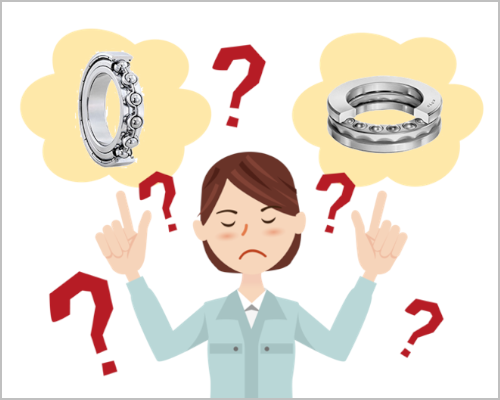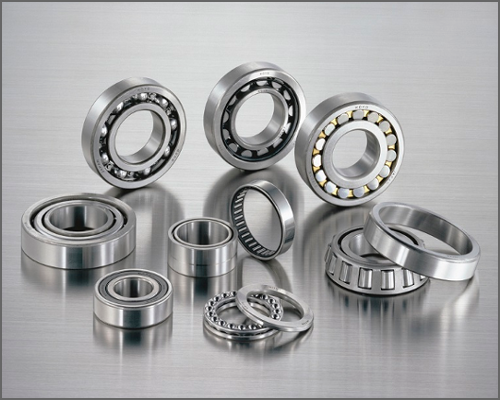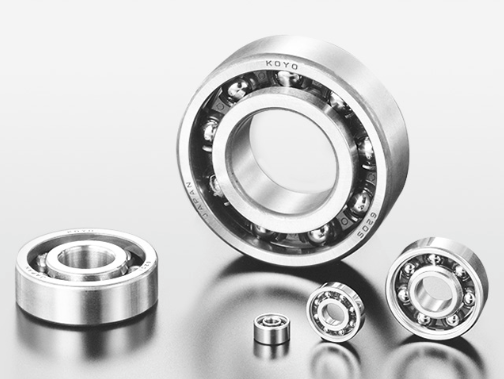Bearing Trivia
What Are the Differences Between Bearings? The various types and special features of bearings
- #1 What Are Bearings?
There are various types of bearings, and we must select the type of bearing most suited to a particular machine's structure and use.
In this part, we will divide the types of bearings into broad categories, and then explain the main features of bearings.

1. The categorization of bearings
Bearings support forces applied from various directions, and so they can be categorized based on the "direction of the force".
Firstly, we will explain about the forces applied to bearings.
Figure 1 shows the forces applied to the bearing used in a car's wheel with a tire on it.
The force generated by the weight of the vehicle (the blue arrow in Figure 1) is applied perpendicular to the axle.
Conversely, the centrifugal force generated when the car turns(the red arrow in Figure 1) is applied in the same direction as the axle.
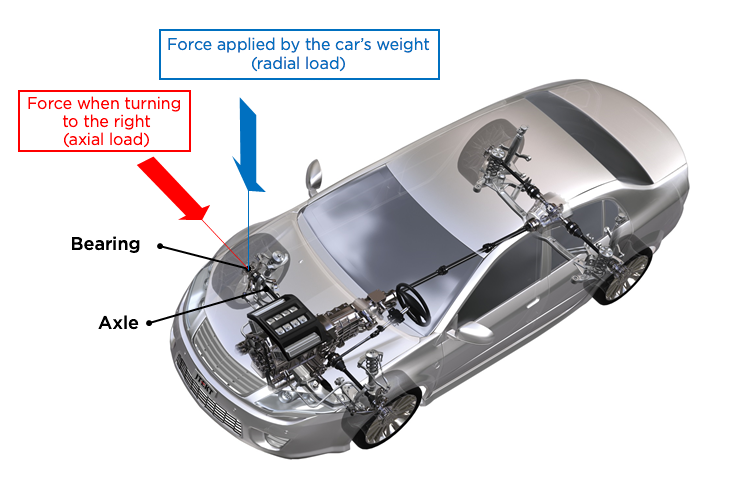
Fig. 1: The forces applied to the bearing used in a car's wheel with a tire on it
In this way, bearings at all times have forces applied from various directions.
The bearings are categorized based on which direction the force is coming from and how much force can be applied.
The radial and axial loads applied to a bearing
The force applied to a bearing is called the "load".
The force applied perpendicularly to the shaft is called the "radial load",
and that applied in the same direction as the shaft is called the "axial load".
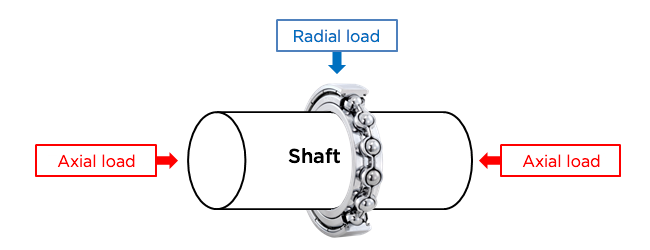
Fig. 2: The radial and axial loads
The categorization of bearing types
As can be seen in Table 1, bearings can be categorized into four groups based on the direction of the force supported and the shape of the rolling elements.
For more details, please take a look back at Part 3!
Table 1: The categorization of bearing types
| Rolling element | |||
| Ball | Roller | ||
| Direction in which force is mostly applied | Perpendicular to the shaft (radial load) |
Radial ball bearing | Radial roller bearing |
| The same direction as the shaft (axial load) |
Thrust ball bearing | Thrust roller bearing | |
Of the four types of bearings listed in Table 1, radial ball bearings and radial roller bearings are used most often. We will explain a bit about those two types of bearings.
2. Radial ball bearings
"Radial ball bearings" are ball bearings that can support a force that is applied perpendicularly to the shaft.
Deep groove ball bearings
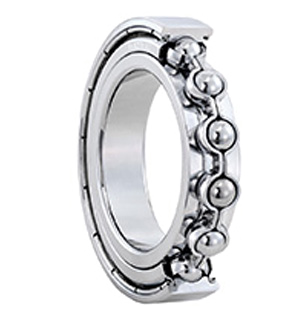
Deep groove ball bearings are the most widely used among all bearings.
They can support both a radial load and a certain amount of axial load coming from both directions at the same time.
If a bearing to support a very large axial load is needed, the "angular contact ball bearings" explained below are used.
Product information: Deep Groove Ball Bearing
Angular contact ball bearings
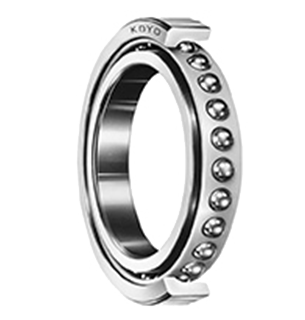
Angular contact ball bearings can support a radial load and a one-directional axial load at the same time.
When axial loads coming from both directions are to be supported, two or more angular contact ball bearings are combined together.
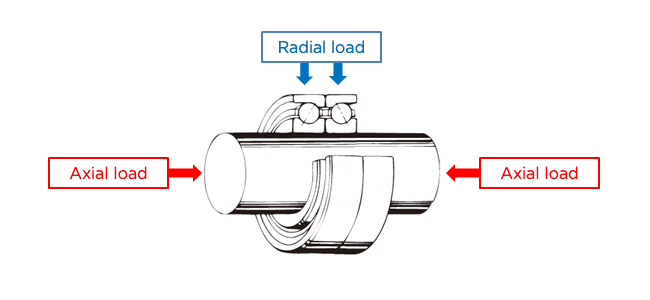
Fig. 3: A combination of angular contact ball bearings to support axial loads coming from both directions
Here is a further explanation of the contact angle of the angular contact ball bearings.
The contact angle of the radial and axial loads
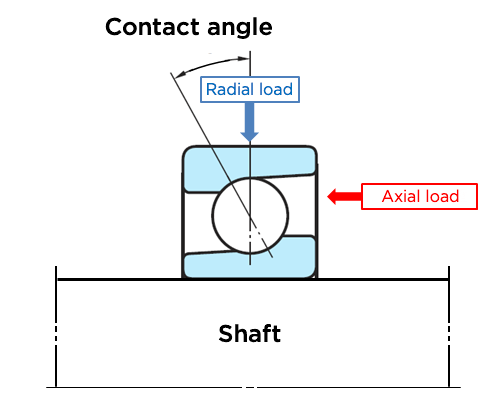
Fig. 4: The structure of an angular contact ball bearing supporting radial and axial loads
The contact angle is the angle formed by the direction of the load applied to the bearing rings (races) and rolling elements, and a plain perpendicular to the shaft, when a "radial load" and "axial load" are both applied to a bearing.
Product information: Angular Contact Ball Bearing
3. Radial roller bearings
Radial roller bearings are roller bearings that can support a force perpendicular to the shaft. They can support an even greater load than radial ball bearings, and there are bearing types that are made to suit the type of roller.
Cylindrical roller bearings
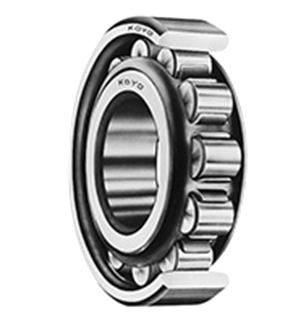
These use cylindrical rollers as their rolling elements. Cylindrical roller bearings can support an even greater radial load than deep groove ball bearings, and are used in machinery where they will experience strong impacts.
Product information: Cylindrical Roller Bearing
Needle roller bearings
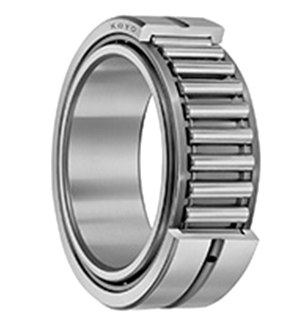
These use needle rollers as their rolling elements. Needle rollers have a smaller diameter than cylindrical rollers, and so (as can be seen in Figure 5) the bearings have a smaller cross-sectional height and contributed to the down-sizing of machinery.
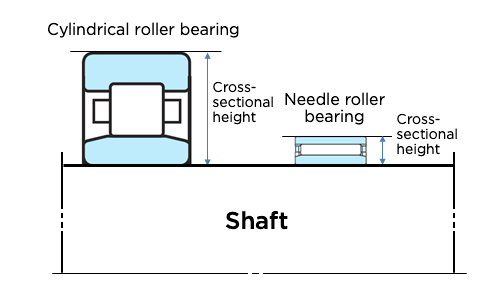
Fig. 5: The difference in cross-sectional height between a cylindrical roller bearing and a needle roller bearing
Product information: Needle Roller Bearing
Tapered roller bearings
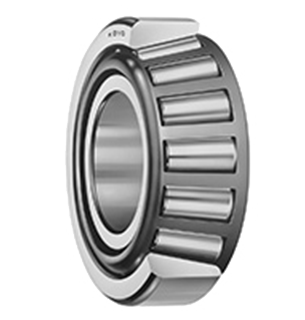
These use tapered rollers in the shape of tapered trapezoids as their rolling elements.
Tapered roller bearings are the most widely used among all roller bearings, and can support a radial load and a one-directional axial load at the same time.
When axial loads coming from both directions are to be supported, two or more tapered roller bearings are combined together.
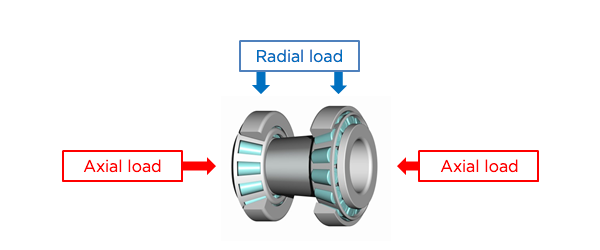
Fig. 6: A combination of tapered roller bearings to support axial loads coming from both directions
Product information: Tapered Roller Bearing
Spherical roller bearings
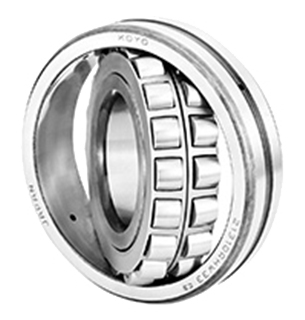
These use barrel-shaped convex rollers as their rolling elements. As shown in Figure 7, they are inserted between a spherical outer ring raceway surface and an inner ring raceway surface. This is why the inner ring, rolling elements and cage in a spherical roller bearing are able to rotate while inclined toward the outer ring.
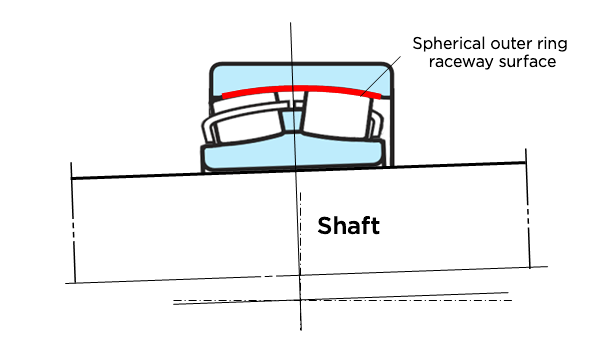
Fig. 7: The structure of a spherical roller bearing
As shown in Figure 8, spherical roller bearings can support a large load, and are used in machines where the shaft is easily bent.
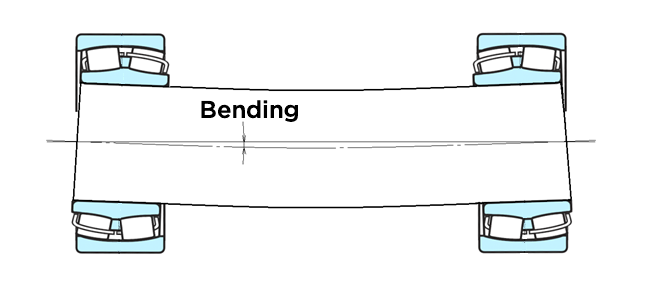
Fig. 8: The bending of a shaft
Product information: Spherical Roller Bearing
Conclusion
There are various types of bearings categorized by the direction and magnitude of the force they can support, and the optimal bearing type is selected, taking the machine's structure into consideration.
There are many other types of bearings we didn't introduce in this article.
For those who wish to learn more, please click on the Koyo Bearing product-type pages or the catalog below. You can also contact JTEKT directly.
Search by product type
Ball & Roller Bearings Catalog
Contact Us
